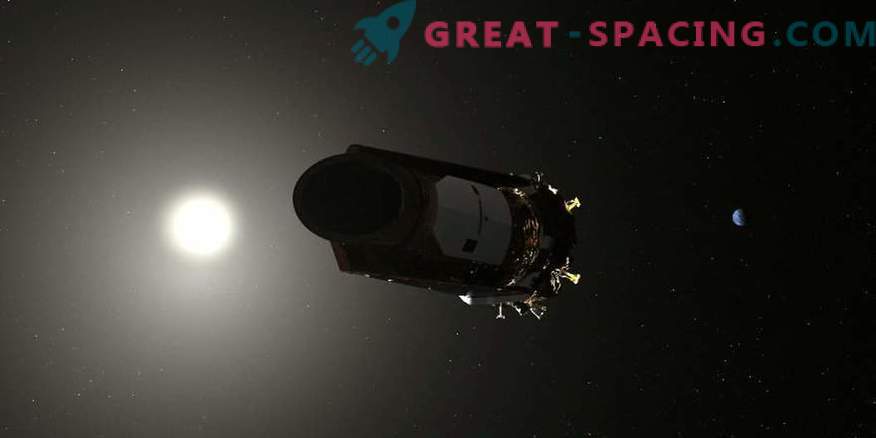
The artistic vision of the NASA Kepler Space Telescope. As of October, the main planetary hunter was in space for almost a decade.
The main planet hunter, the Kepler Space Telescope, was officially declared dead several months before the 10th anniversary of his work. This was reported by NASA on October 30th. And the main problem was not the breakdown or failure, but the banal consumption of the latest fuel reserves. His ability to point to distant stars and detect possible worlds deteriorated in early October, but dispatchers were able to receive data. Now the telescope was silent, having spent the last drop of fuel.
During his faithful service, Kepler managed to find 2,681 officially confirmed worlds outside the solar system and even more candidates. With his help, managed to see the rocky worlds of earthly size, on which life is possible. He also discovered the super-Earth: more Earth, but less Neptune.
It is likely that 2-10 found planets belong to the earth rocky type and are located in the habitat zone. But it is also important that 20-50% of visible stars are able to dispose of planets resembling our Earth. And last year they even managed to find a whole system with 8 planets.
The cost of the mission is $ 700 million. In 2013, it seemed that Kepler was lost forever because of a breakdown. However, the engineers managed to cope with the problem and expanded the mission in the form of a K2 project. Thus, we managed to find 350 more confirmed exoplanets. Kepler focused on stars distant thousands of light years away. Now statistics show that in the Milky Way each star is able to have at least one planet. Recall that in April Kepler TESS receiver started. It differs in that it peers at the stars, which are located much closer to the Earth. And he has already managed to find possible planets. Kepler became an incredibly breakthrough mission, because it proved that we live in a galaxy filled with many planets. Now we need to direct all forces to their research and search for life.
It should also be mentioned that the retirement age also affected other devices. Problems with fuel are observed in the apparatus of Dawn, who is currently studying the dwarf planet Ceres (has been working for 11 years). The 28-year-old Hubble telescope, which managed to return to work after a 3-week break, is out of order. The same goes for the 19-year-old Chandra Observatory. Both devices have experienced problems with gyroscopes.
At NASA they say that all these are just coincidences and make a discount on the age of technology. With a distance of 94 million miles from Earth, Kepler will remain in a stable orbit around the Sun. The controllers will shut off the spacecraft's transmitters before finally wishing good night.











































